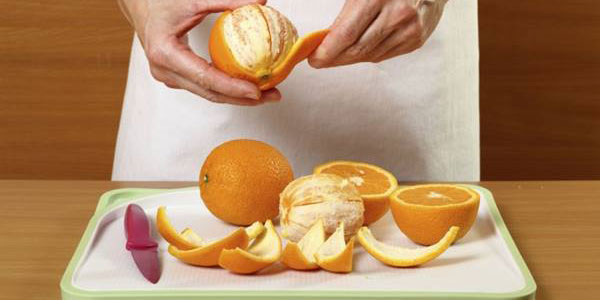Think Twice About Throwing Away that Fruit Peel
What’s the first thing you do when you grab a banana? That’s easy. You peel the fruit. But tossing away that peel may make you miss out on a wealth of additional nutrients and essential vitamins.
Peels and rinds do more than just protect fruit from the environment and outside organisms, they also offer a variety of nutritional benefits. The outside layer of bananas, pineapples and oranges, for example, contain dietary fiber, antioxidants, B-complex vitamins and minerals such as calcium, selenium and zinc that can improve your health. Now, you may be saying to yourself: “Sure, the peel may contain nutrients, but I just can’t bring myself to eat it.”
Rest easy. I’m not suggesting that you should immediately start chowing down on a hard pineapple rind, but there are many creative ways to incorporate the nutrition of the fruit’s outer layer into your diet. If you’ve always discarded the peel, here are some reasons why you might not want to, and some tasty ways to use this often overlooked nutrition source.
Health Benefits of the Fruit Peel
One of the main reasons to eat the fruit peel is because it is rich in dietary fibers that help to keep you full. Dietary fiber can prevent constipation by reducing the time it takes for food to travel through the stomach. They also bind to bile salts—substances and fluids secreted from the gallbladder during fat digestion—eliminating them from the stomach and lowering bad LDL cholesterol in the process.In most fruits, the peel also is cholesterol-free, low in sugar, calories and fat. Some of them, like banana peels, also have mood-boosting properties. Banana peels contain tryptophan, an amino acid that gets converted into serotonin, a feel-good hormone that promotes happiness. They are also a rich source of potassium, and contain more soluble and insoluble fiber than the fruit on the inside. Banana peels also have lutein, a powerful antioxidant that protects the eyes from the effects of UV radiation, which may play a role in reducing the risk of cataracts and age-related macular degeneration that leads to vision loss.
Watermelon rinds, pineapple cores and orange peels also have similar benefits. The white part of watermelon rind helps to improve circulation. It contains an amino acid called citrulline that increases blood flow and improves heart health. The core of a pineapple contains bromelain, an enzyme with anti-inflammatory properties. It also has high amounts of Vitamin C, the mineral manganese, thiamin and B vitamin, which gives you energy.
An orange peel also is jam-packed with nutrients. It contains three grams of fiber and three times as much Vitamin C as what’s inside the fruit. It also contains vitamins such as riboflavin, thiamin, niacin, folate, vitamin A, vitamin B-6 and vitamin B-5, as well as minerals like calcium, iron, potassium, zinc and magnesium. Even with all these nutritional benefits, you should be careful about the kind of orange peels you consume. Non-organic orange peels may contain less than healthy chemicals, so it’s best to use certified organic oranges if you want to eat the peel.
Aside from fruit, vegetables such as potatoes, eggplants and cucumbers also pack in healthy nutrients. Potato skins have more iron, calcium, potassium, magnesium, vitamin B6 and vitamin C ounce-for-ounce compared to the inside of a potato. Sweet potato skins also have lots of beta-carotene, which can improve your immune system. An eggplant’s purple outer shell contains an antioxidant called nasunin that can reduce the risk of certain cancers. It also promotes glucose tolerance and has anti-inflammatory properties. Cucumber skin is antioxidant-rich and contains insoluble fiber, potassium and Vitamin K, which helps to increase bone strength, prevent heart disease and maintain your blood’s ability to clot.
Ways to Use the Peel
So, how exactly do you reap all these nutritional benefits? Here are some easy ways to consume peels and rinds:- Bananas: cut the peel into chunks and throw them into the blender with your smoothie. If you wait until the peel gets more ripe, it will be more flavorful, softer and easier to blend.
- Watermelon rinds: You can dice watermelon rinds, season and saute them in olive oil for a healthy side dish to your main meal. Chop them with carrots, potatoes and parsnips to make soups and stews extra healthy, or blend them with the flesh of the watermelon to make an extra nutrient-rich smoothie.
- Pineapple cores: Though they can be a little tough and not as sweet as regular pineapple, pineapple cores are the perfect addition to salads. Just dice them really small and toss them in. You also can combine them with other fruit juices to make them easier to eat.
- Orange peels: Add the zest of an orange peel to a homemade vinaigrette or to greens beans, asparagus and your favorite healthy snack or dessert, like yogurt. You even can dry orange peels and add a few pieces to tea when you brew it.



